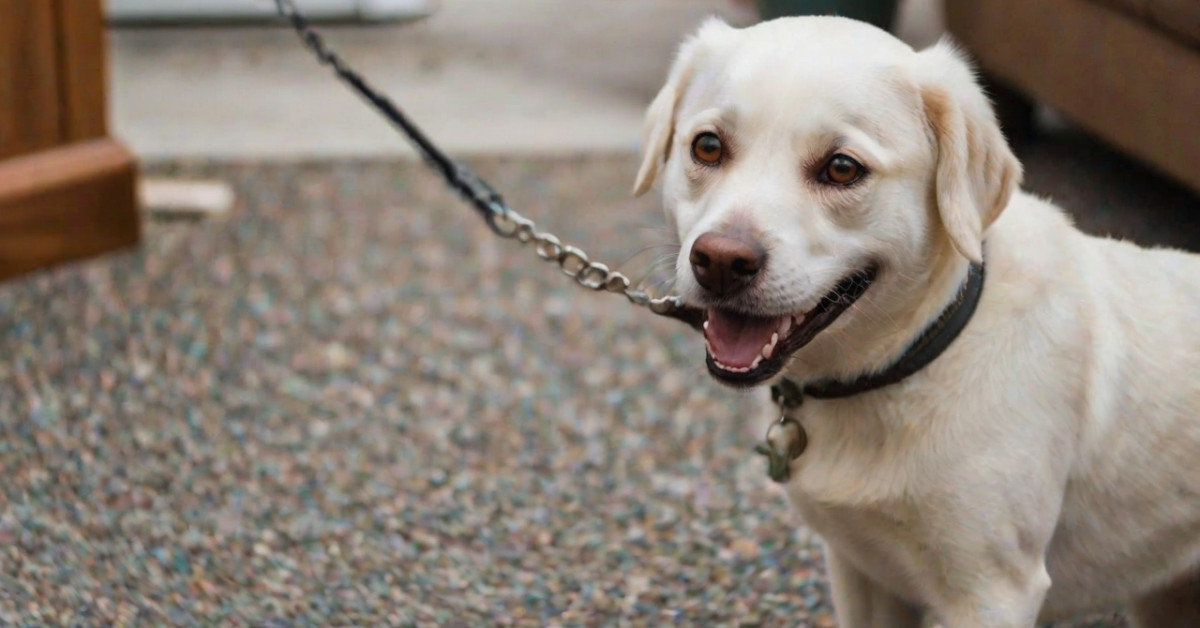My Shih Tzu Barks at Everything: A Personal Journey and Practical Advice
Have you ever experienced that wonderful, yet slightly exasperating feeling of your Shih Tzu barking at everything? I sure have! Let me tell you about my precious Shih Tzu, Daisy. She’s got this incredibly fluffy coat—like a cloud—and those deep, expressive eyes. But boy, can she bark! If a leaf has the audacity to flutter past our window, you bet Daisy will let the whole neighborhood know.
The Start of Our Journey
I vividly remember one autumn afternoon when a squirrel darted across our backyard. Daisy, tiny as she was back then, transformed into a defensive guard dog. Her barking echoed through the house like tiny thunderclaps. My neighbor, Mrs. Hobson, even gave us a call, wondering if everything was alright.
At first, I found it quite adorable, then mildly annoying, and eventually, downright frustrating. It wasn’t just the squirrel - it was every mailman, jogger, and even the occasional strong gust of wind. But I felt a strange solidarity with Daisy. She was vigilant, and in a way, she made our home feel alive and bustling.
Understanding the Shih Tzu’s Nature
To really tackle Daisy’s barking, I had to understand a bit more about Shih Tzus. These little dynamos have quite the history! Originating from Tibet, Shih Tzus were bred to be companion dogs for Chinese royalty. Can you imagine that? These pint-sized pups were meant to guard palaces, hence their watchful nature.
But let’s not romanticize it too much. Having a Shih Tzu means dealing with their innate suspicion of the outside world. They are naturally alert and protective. Sometimes, it’s almost like they carry the burden of their regal ancestors, feeling the need to guard their kingdom—even if it’s just a tiny apartment in downtown.
The Struggle with Constant Barking
Initially, calming Daisy seemed like an uphill battle. I tried everything from stern talking-tos (which felt a bit ridiculous) to high-tech gadgets that promised to shush her. But nothing worked quite as well—that is, until I adopted a holistic approach.
I remember once, Daisy barked non-stop at our new Amazon package delivery guy. He chuckled and said, “Wow, she’s really on top of her game!” That got me thinking about her role. Daisy wasn’t being a nuisance; she was doing her job as she saw fit. But it was clear we needed to balance her instincts with a bit of tranquility.
Training Techniques That Worked for Us
One method I found effective was desensitization. By gradually exposing Daisy to outside stimuli, she began to understand that not everything was a threat. We’d sit by the window together and watch—silently. Well, I was silent. Daisy had a bit more learning to do.
Another great tactic was positive reinforcement. Every time Daisy managed to stay calm, she got a treat. Simple as that. 🍖 It’s like training a child—reward the good behavior to encourage it. Sometimes, all it takes is a little patience and a lot of tasty treats.
Professional Help and Behavioral Insights
Of course, I didn’t shy away from seeking professional help. Consulting with a veterinary behaviorist was a game-changer. I learned about the importance of mental and physical stimulation for dogs. Daisy wasn’t just barking out of fear or vigilance; sometimes, she simply needed an outlet for her energy and curiosity. We incorporated puzzle toys, longer walks, and interactive playdates with other dogs.
Adding a few sensory details here: it was fascinating to watch Daisy when she encountered new toys. Her little nose would twitch, ears perked, and she’d carefully paw at her new “puzzle.” She’d sniff and circle it like it held the secrets of the universe. Watching her engage was like witnessing a child open presents on Christmas morning.
Sensory Overload: When It Gets Too Much
One significant observation was understanding when Daisy was overwhelmed. Shih Tzus can be prone to sensory overload, leading to excessive barking. Imagine a room filled with loud music, bright lights, and constant movement—how would you feel? That’s Daisy when the world outside our window was too active.
We created a sanctuary for her—a plush bed in a quiet corner with her favorite blanket (pretty sure it’s more threadbare than comfort, but she loves it). Whenever things got too hectic, Daisy had a retreat. It helped immensely.
A Community of Fellow Shih Tzu Owners
Talking to fellow Shih Tzu owners also helped. You’d be surprised how much better you feel knowing others are in the same boat. Emma, a friend of mine with a Shih Tzu named Ollie, shared stories of their misadventures with barking too.
Emma once recounted how Ollie barked at her reflection in the mirror for a solid hour. Can you believe that? We laughed so hard, realizing our dogs were more alike than we initially thought.
Expert Advice and Random Facts
Fact: Did you know Shih Tzus have a special bark frequency uniquely high-pitched compared to other breeds? This historically helped alert their royal owners to any disturbances more effectively!
There are quite a few experts who suggest varied routines for managing barking. Dr. Julie Buzby recommends consistency and patience. Dogs, especially Shih Tzus, thrive on routine and predictability. Using consistent commands like “quiet” or “settle” establishes a clear expectation for your dog.
Balancing Exercise and Rest
One crucial aspect I nearly overlooked was balancing exercise and rest. Shih Tzus, with their short legs and robust bodies, aren’t built for marathon runs, but short, frequent walks work wonders. Daisy and I developed a rhythm—morning strolls to smell the roses (literally) and evening walks to watch the sunset. 🌅
Sometimes, during our walks, Daisy would find the oddest things fascinating—a fallen leaf, a tiny pebble, or, god forbid, a stray cat! Her little adventures always made me smile, despite the occasional barking fit.
Mental Stimulation: A Game Changer
Just as important as physical exercise is mental stimulation. Shih Tzus are intelligent, needing their minds engaged to keep them from barking. Puzzle toys were a lifesaver. It’s quite fun watching Daisy figure them out. Her concentration face could rival any human’s during a Sudoku challenge.
Addressing Health Concerns
Every now and then, barking can be an indication of underlying health issues. I took Daisy for regular vet check-ups. Once, she had a minor ear infection—something I wouldn’t have noticed if not for her increased barking and ear scratching.
Vet appointments can be anxiety-inducing. Daisy would tremble like a leaf, and I felt helpless. But our wonderful vet, Dr. Sanders, always had a way with soothing words and gentle hands. It made all the difference.
Implementing Quiet Time
Establishing a “quiet time” routine was crucial. Around the same time every day, I dimmed the lights, played soft music, and Daisy knew it was time to unwind. It’s akin to a spa day, but dog-style! A little massage, calming music, and voilà—Daisy was more serene.
Overcoming Challenges: A Personal Reflection
There were days when it felt like nothing was working. I’d feel frustrated and disheartened. Sometimes, I’d mistakenly yell “Daisy, stop!” only to realize that my frustration probably made things worse. Staying calm—easier said than done—was essential. I began practicing mindfulness exercises myself. It was quite the journey.
A Word on Patience and Love
If there’s one thing Daisy taught me, it’s patience and unconditional love. Her barking, while irksome at times, is a part of her personality. Learning to love her quirks while guiding her gently made all the difference. It’s almost poetic—understanding and love go hand-in-hand.
Training Tips Recap
- Desensitization: Gradually exposing your Shih Tzu to outside stimuli can help reduce their alertness to non-threatening occurrences.
- Positive Reinforcement: Reward quiet behavior with treats and affection.
- Professional Guidance: Consult with a veterinary behaviorist for expert insights.
- Routine and Predictability: Establish clear commands and consistent routines.
- Physical and Mental Stimulation: Engage your dog in walks and puzzle toys.
- Quiet Time: Implement a daily unwind routine with soft music and dim lights.
Overall: Lessons Learned and Final Thoughts
In closing, managing Daisy’s barking was not just about making her quieter; it was about building trust and understanding between the two of us. It took time, patience, and a fair share of missteps. But every moment was worth it. 😊
Lastly, I’d like to share a small quote that kept me going through challenging days: “The only creatures that are evolved enough to convey pure love are dogs and infants.” - Johnny Depp. It reminded me that Daisy’s barking was simply her way of communicating and showing love.
Thank you for reading my journey with Daisy. 🐾 Stay patient and give your little fluffballs all the love they deserve. Until next time, remember: Keep calm and wag on!










